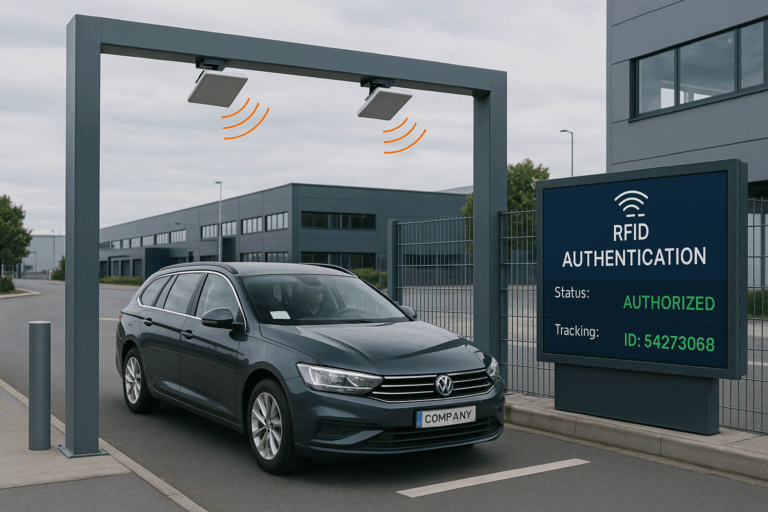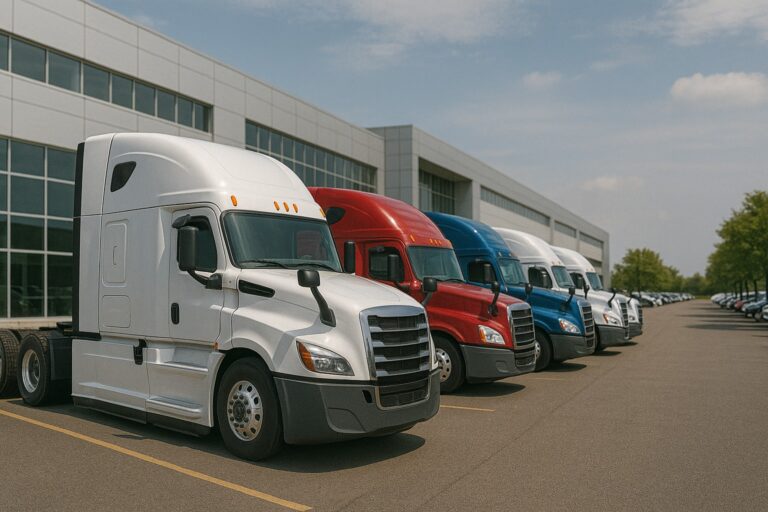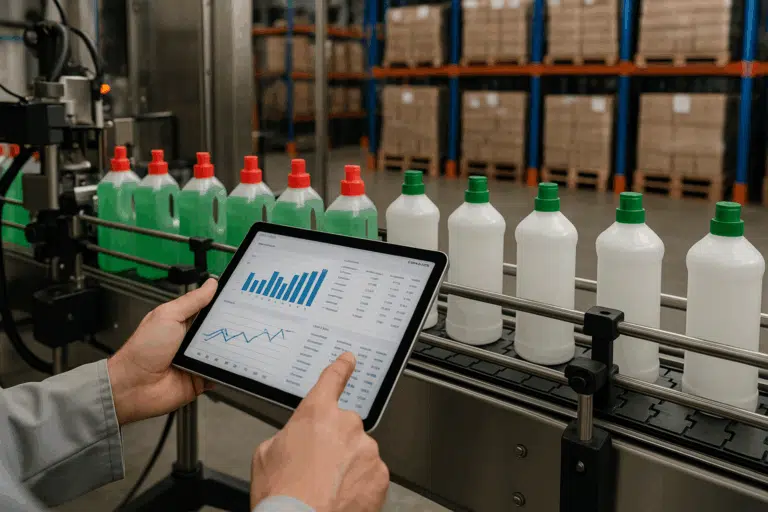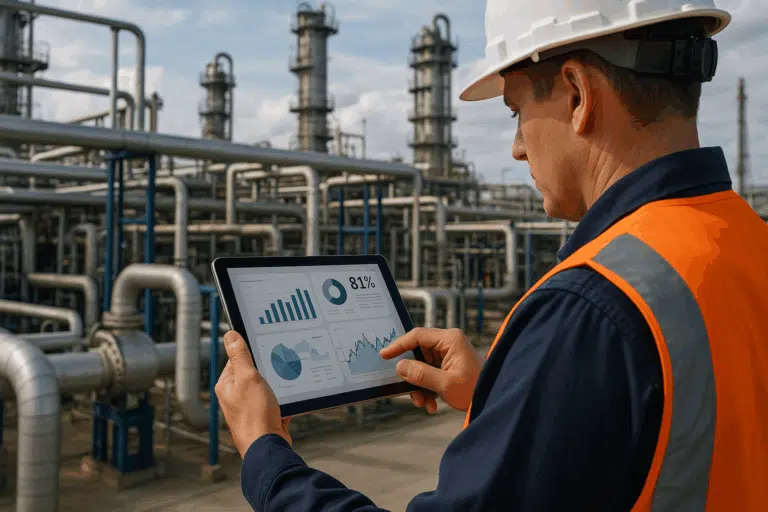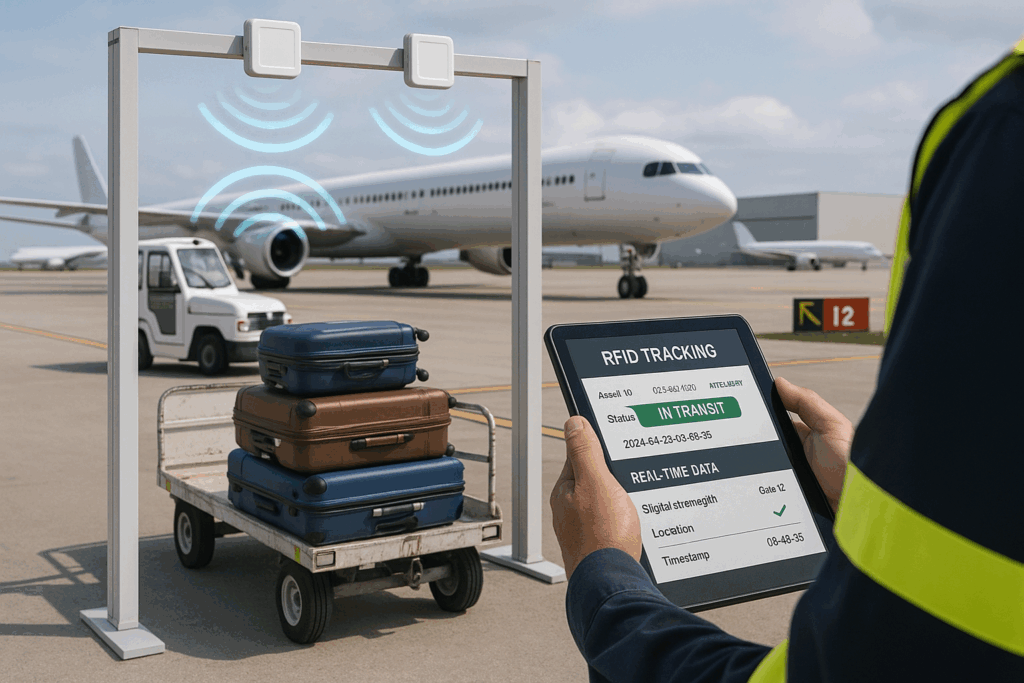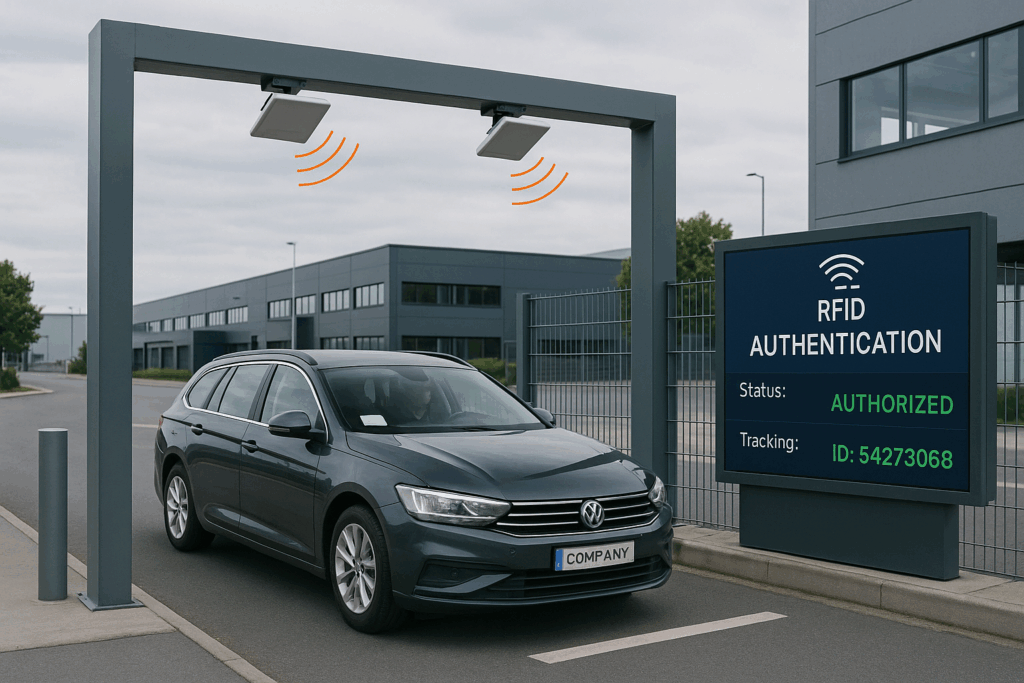RFID technology plays a crucial role in the construction industry by enabling efficient tracking of workers. The implementation of RFID construction worker tracking systems enhances safety measures and ensures real-time monitoring of employees on job sites. This technology is instrumental in improving operational efficiency, as it provides accurate data on workers’ locations and activities. With RFID construction worker tracking, companies can optimize resource utilization and contribute to a safer work environment.
Table of Contents
ToggleKey Takeaways
- RFID technology significantly enhances safety by providing real-time location tracking of construction workers on-site.
- Implementing RFID can streamline project management and improve operational efficiency through precise tracking and activity logging.
- RFID systems can be integrated seamlessly with existing construction management software and safety protocols.
- Privacy and ethical considerations are paramount, requiring clear communication and adherence to privacy laws when implementing RFID tracking.
- Future advancements in RFID and AI are expected to offer predictive analytics, further enhancing safety and efficiency in construction environments.
The Basics of RFID in Construction
RFID construction worker tracking forms the backbone of modern site management. This technology is instrumental in enhancing site safety and operational efficiency by providing real-time data on worker movements and activities. Understanding the basics of RFID is crucial for implementing an effective tracking system.
What is RFID Worker Tracking?
RFID construction worker tracking involves the use of Radio Frequency Identification (RFID) technology to monitor the location and movement of workers on a construction site. This system uses RFID tags, which are small devices carried by workers, and RFID readers strategically placed around the site. When a worker with a tag passes near a reader, the tag’s unique information is captured and sent to a central database. This data helps project managers ensure safety, manage labor efficiently, and maintain an accurate record of worker presence and activity on the construction site.
Importance of RFID in Construction Safety
RFID construction worker tracking significantly enhances safety measures on construction sites by providing real-time location data of all personnel. This technology allows for rapid identification and evacuation of workers in case of emergencies, thereby reducing response times and potentially saving lives. Moreover, RFID tracking ensures compliance with safety regulations by verifying that only authorized and trained personnel are present in restricted or hazardous areas. Additionally, it enables continuous monitoring and enforcement of safety protocols, helping to maintain a safer work environment and reducing the risk of accidents.
Implementing RFID Tracking

Successfully implementing RFID construction worker tracking involves careful planning and integration with existing systems. By setting up robust RFID infrastructure, construction companies can significantly improve their workforce management and safety protocols. This process requires attention to detail and a comprehensive understanding of RFID technology.
Setting Up RFID Systems for Worker Tracking
RFID construction worker tracking involves the use of Radio Frequency Identification (RFID) technology to monitor the location and movement of workers on a construction site. This system uses RFID tags, which are small devices carried by workers, and RFID readers strategically placed around the site. When a worker with a tag passes near a reader, the tag’s unique information is captured and sent to a central database. This data helps project managers ensure safety, manage labor efficiently, and maintain an accurate record of worker presence and activity on the construction site.
Integrating RFID with Existing Safety Protocols
Integrating RFID construction worker tracking with existing safety protocols and construction management software involves several best practices. First, ensure compatibility by selecting RFID systems that can seamlessly interface with your current software platforms. Second, conduct thorough training sessions for both management and workers to familiarize them with the new technology and its benefits. Third, regularly update the RFID system and software to address any vulnerabilities and improve functionality. Finally, establish clear procedures for data monitoring and analysis, ensuring that the RFID tracking data is used effectively to enhance safety measures and streamline construction management processes.
Advanced Applications and Benefits

The advanced applications of RFID construction worker tracking go beyond basic tracking and monitoring. These systems offer numerous benefits, including enhanced safety, improved project management, and better compliance with safety regulations. Exploring these advanced applications can provide insights into maximizing the potential of RFID technology.
| Advantages | Description |
|---|---|
| Enhanced Safety | Real-time location tracking improves emergency response times and ensures compliance with safety protocols. |
| Operational Efficiency | Accurate data on worker movements optimizes resource utilization and project scheduling. |
| Integration | RFID systems can be seamlessly integrated with existing construction management software. |
| Privacy | Clear communication and strict access controls ensure privacy and ethical use of tracking data. |
Real-Time Location Tracking and Its Advantages

RFID construction worker tracking allows for real-time monitoring of personnel, which plays a crucial role in preventing accidents and improving emergency response times. By continuously tracking worker locations, site managers can quickly identify and address unsafe conditions, such as overcrowding in hazardous areas. In the event of an emergency, real-time data enables rapid identification of all individuals’ locations, facilitating swift and targeted evacuation efforts. Additionally, knowing the exact whereabouts of workers allows emergency responders to locate and assist those in need more efficiently, significantly reducing response times and potentially saving lives.
Improving Project Management Through RFID Tracking
RFID construction worker tracking enhances workforce management and project scheduling by providing precise and comprehensive data on worker movements and activities. This technology allows managers to monitor attendance and productivity, ensuring that workers are present and active in their assigned areas. Accurate tracking data helps in identifying bottlenecks and reallocating resources to maintain optimal workflow. Additionally, the detailed records of worker activities facilitate more accurate project scheduling and forecasting, allowing for better planning and adjustments to meet project deadlines efficiently.
Addressing Challenges

Implementing RFID construction worker tracking comes with its own set of challenges. Addressing these challenges effectively is essential for the successful deployment of RFID systems. Understanding potential issues and developing strategies to overcome them can ensure the smooth operation of RFID tracking on construction sites.
Overcoming Technical Challenges in RFID Implementation
Implementing RFID construction worker tracking can encounter technical hurdles like signal interference. Common sources of interference include metal structures, machinery, and electronic devices present on construction sites, which can disrupt the RFID signals. To mitigate these issues, one solution is to use RFID tags and readers that operate on different frequencies, such as UHF (Ultra High Frequency), which are less prone to interference. Another approach is strategically placing RFID readers to avoid obstructions and ensuring they have a clear line of sight. Additionally, using RFID systems with anti-collision algorithms can help differentiate between multiple signals, enhancing accuracy and reliability.
Privacy and Ethical Considerations
Addressing concerns related to worker privacy while maintaining transparency in RFID tracking practices is essential for successful implementation. To safeguard privacy, employers should clearly communicate the purpose of RFID tracking, emphasizing its role in enhancing safety and efficiency rather than monitoring individual behavior. Implementing strict access controls and encryption measures ensures that only authorized personnel can access tracking data, thereby protecting workers’ personal information. Additionally, providing workers with the option to disable RFID tags during non-working hours or breaks can offer them a sense of control over their privacy. Regularly engaging with workers through open communication channels and addressing any privacy concerns promptly fosters trust and transparency in RFID tracking practices.
Tools Tracking with RFID

Implementing RFID construction worker tracking extends beyond monitoring personnel; it also encompasses the efficient management and tracking of tools and equipment on construction sites. This integration ensures that all assets are accounted for, reducing the risk of loss or theft and improving overall project efficiency. Here are key aspects of tools tracking with RFID:
How RFID Tools Tracking Works
RFID tools tracking utilizes RFID tags attached to each tool or piece of equipment. RFID readers are strategically placed throughout the construction site, and when a tagged tool passes within range, the reader captures the tool’s unique information. This data is then sent to a central database, providing real-time updates on the location and status of each tool.
Benefits of RFID Tools Tracking
- Enhanced Inventory Management:
- Real-Time Location Tracking: Provides up-to-date information on the location of all tools, minimizing the time spent searching for misplaced items.
- Inventory Accuracy: Ensures accurate records of all tools on-site, reducing discrepancies and improving inventory management.
- Loss and Theft Prevention:
- Immediate Alerts: Sends alerts if a tool is taken out of the designated area or if unauthorized movement is detected.
- Historical Data: Tracks the usage history of each tool, helping to identify patterns and potential issues.
- Operational Efficiency:
- Streamlined Check-In/Check-Out Process: Automates the check-in and check-out process for tools, reducing manual errors and saving time.
- Maintenance Scheduling: Monitors the usage of tools and equipment, ensuring timely maintenance and reducing downtime.
- Cost Savings:
- Reduced Replacement Costs: Minimizes the need for replacing lost or stolen tools, leading to significant cost savings.
- Optimized Tool Utilization: Ensures that tools are utilized efficiently, reducing the need for excess inventory.
Implementing RFID for Tools Tracking
- Tagging Tools and Equipment:
- Attach durable RFID tags to each tool and piece of equipment. Tags should be selected based on the environment and usage conditions to ensure longevity.
- Setting Up RFID Readers:
- Install RFID readers at strategic locations, such as entry and exit points, storage areas, and high-traffic zones, to capture tool movements accurately.
- Integrating with Management Systems:
- Ensure that the RFID tracking system integrates seamlessly with existing construction management software for centralized data management.
- Training and Adoption:
- Conduct training sessions for workers and management to familiarize them with the RFID system and its benefits. Clear communication and proper training are crucial for successful adoption.
Example of RFID Tools Tracking in Action
Consider a large construction site where multiple teams are working simultaneously. Without RFID tracking, managing tools and equipment can be chaotic, leading to inefficiencies and increased costs. By implementing an RFID tools tracking system, the construction company can:
- Quickly locate any tool, reducing downtime.
- Automatically log the check-in and check-out of tools, ensuring accurate inventory records.
- Receive alerts if tools are moved outside the designated areas, enhancing security.
- Schedule maintenance based on actual usage data, preventing equipment failure.
In summary, RFID construction worker tracking combined with tools tracking creates a comprehensive system that enhances safety, efficiency, and operational management on construction sites. This technology not only safeguards valuable assets but also optimizes workflow, leading to more successful project outcomes.
Future Trends in RFID Technology
The future of RFID construction worker tracking looks promising with continuous advancements in technology. Emerging trends such as AI integration and improved RFID tags are set to revolutionize construction site management. Staying updated with these trends can help companies leverage the full potential of RFID technology.
Next-Generation AI and RFID Integration
Generative AI can revolutionize the analysis of RFID data in construction worker tracking by predicting potential safety hazards and enhancing decision-making processes. By processing vast amounts of real-time data, generative AI algorithms can identify patterns and trends indicative of safety risks, such as worker congestion in specific areas or deviations from established protocols. These predictive capabilities enable proactive measures to be taken, such as adjusting workflows or reallocating resources to mitigate potential hazards before accidents occur. Furthermore, generative AI can assist in optimizing decision-making by providing actionable insights derived from RFID data analysis, empowering project managers to make informed decisions that prioritize worker safety and efficiency on construction sites.
Innovations in RFID Tags and Equipment
Upcoming advancements in RFID technology promise to further enhance tracking capabilities and durability for construction environments. One such advancement is the development of ruggedized RFID tags designed to withstand harsh conditions commonly found on construction sites, such as extreme temperatures, moisture, and physical impact.
Additionally, advancements in long-range RFID readers and improved antenna designs will extend the range and accuracy of tracking systems, allowing for more comprehensive coverage of large construction areas. Moreover, the integration of RFID technology with other sensors, such as accelerometers and environmental sensors, will enable real-time monitoring of not only worker location but also their safety and well-being, further enhancing safety measures on construction sites.
Case Studies
Real-life case studies of RFID construction worker tracking highlight its effectiveness in enhancing site safety and efficiency. Examining these success stories provides valuable insights into the practical applications of RFID technology. These examples demonstrate the transformative impact of RFID on construction site management.
Success Stories: RFID in Action
Several construction companies have successfully implemented RFID worker tracking systems to enhance safety, efficiency, and project management. For instance, Skanska, one of the world’s leading construction companies, implemented RFID technology across its projects to track workers’ movements and monitor safety compliance.
Similarly, Bechtel, another major construction firm, utilized RFID systems to improve workforce management and safety on large-scale projects like the Crossrail construction in London. Additionally, DPR Construction, known for its innovative approaches, implemented RFID tracking to enhance worker safety and optimize project workflows on various construction sites. These real-life examples demonstrate the effectiveness of RFID worker tracking systems in improving construction operations and ensuring worker well-being.
Get in Touch for a free quote
RFID technology has brought about a transformative impact on construction site safety and management. By enabling real-time tracking of personnel, RFID systems enhance safety measures by facilitating rapid identification of workers’ locations, improving emergency response times, and ensuring compliance with safety protocols.
Moreover, RFID technology enhances workforce management by providing accurate data on worker movements and activities, optimizing project scheduling, and improving decision-making processes. With its ability to predict potential safety hazards and its durability in harsh construction environments, RFID technology has become an indispensable tool for construction companies seeking to prioritize safety, efficiency, and project success.
FAQs
How cost-effective is RFID worker tracking in construction?
Discussion on the investment vs. return, highlighting cost savings through reduced accidents and improved efficiency.
Can RFID systems operate effectively in all weather conditions typical to construction sites?
Analysis of RFID system durability and functionality across various environmental conditions.
What measures are in place to secure the data collected by RFID systems?
Overview of cybersecurity practices and data protection measures essential for RFID implementations.
How does RFID contribute to legal compliance in construction safety?
Explanation of how RFID helps in meeting regulatory requirements and documenting safety measures.
What future technologies could complement RFID tracking in construction?
Insight into potential integrations with drones, wearables, and IoT devices to further enhance worker safety and site management.




